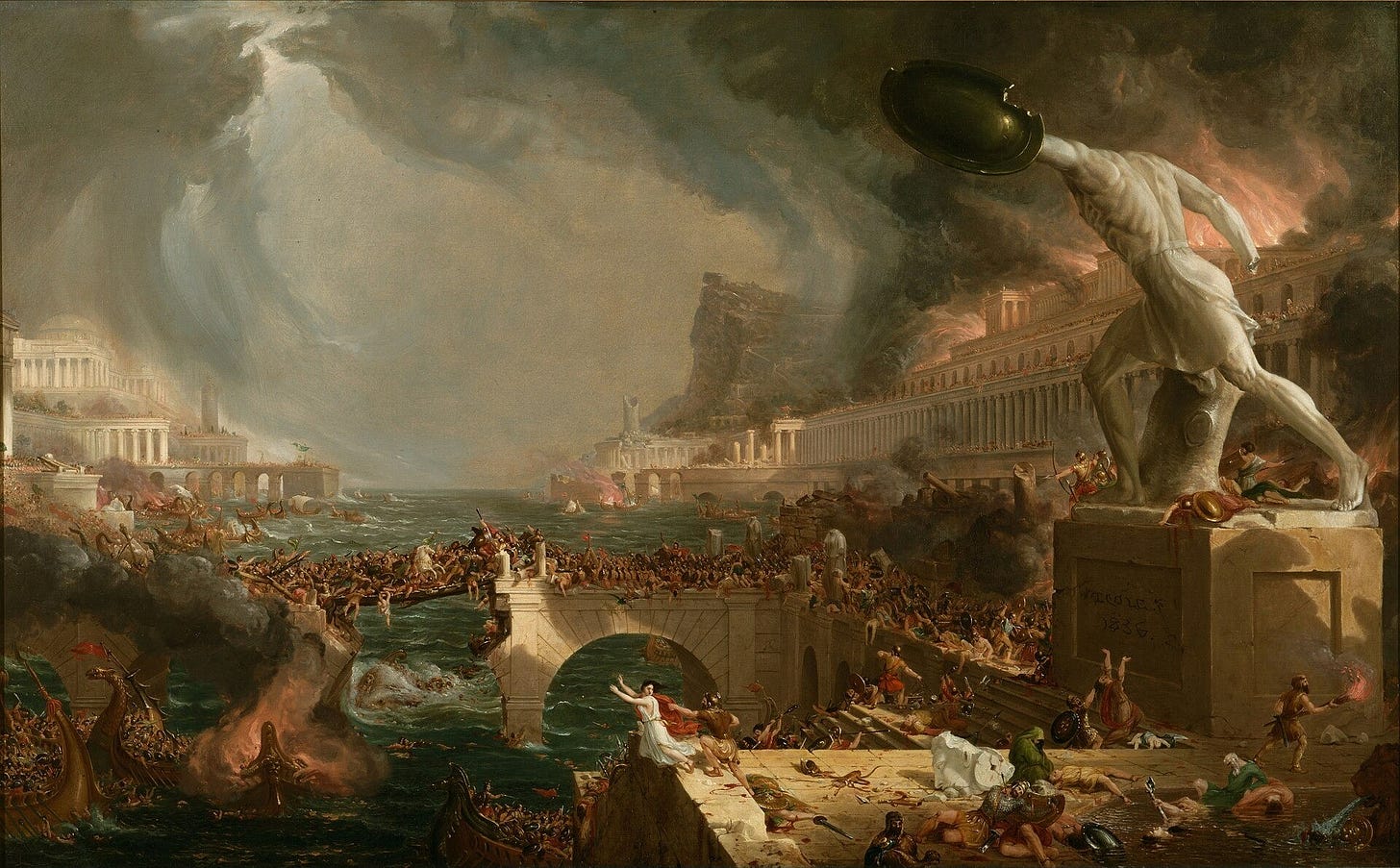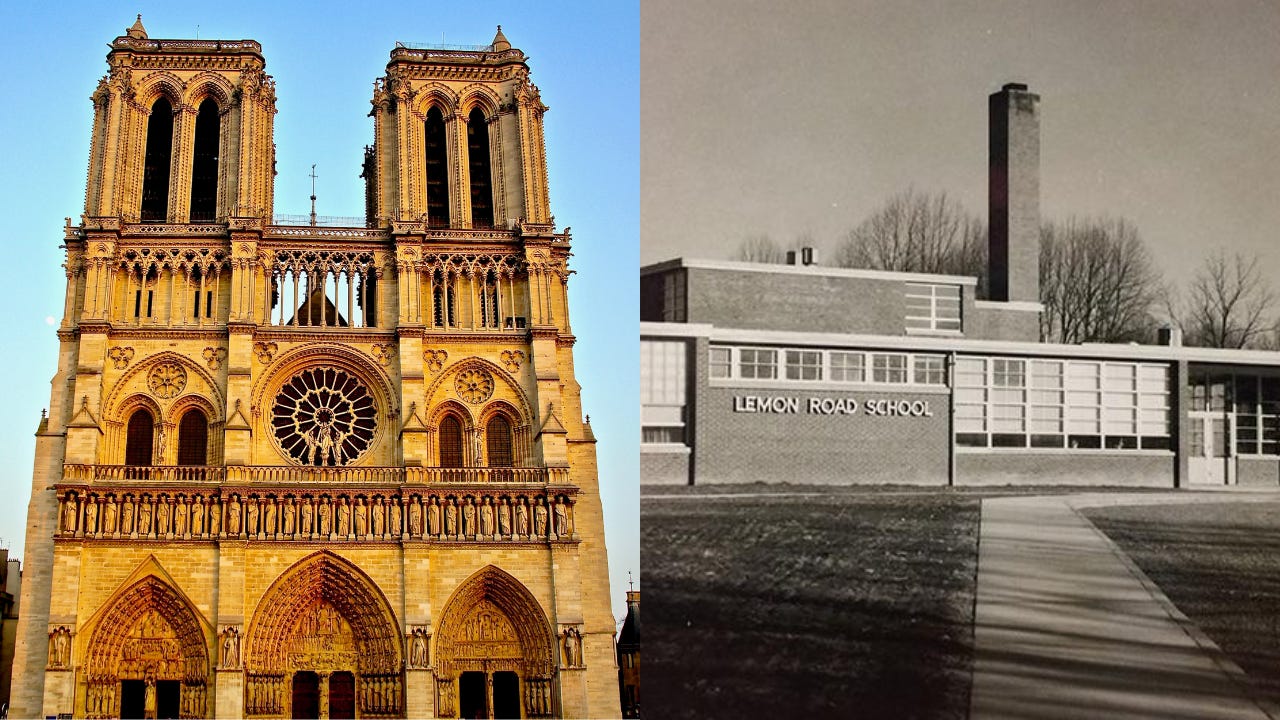Fiat Money: The Agent of Cultural Destruction
Since the end of the gold standard, fiat money has quietly shaped not only how we trade, but how we think, build, and live. When a currency can be created at will, it subtly teaches people that value itself can also be created at will. This fosters what economists call a high time preference: a focus on the immediate present over the future.
Wandering the old streets of Florence, the grandeur of the Ponte Vecchio is striking, standing as a medieval stone bridge that not only withstood centuries of floods and wars but also became a vibrant center of commerce, still bustling with goldsmith shops after almost 700 years.
Compare this to a recent experience in a typical American suburb, where vast neighborhoods appear seemingly overnight: houses with vinyl siding, composite shingles, and doors that often need replacing every decade or two. These “disposable houses” are not designed for future generations, but for expedient occupancy and eventual replacement. One observer noted returning to a childhood home and finding it unrecognizably altered by a relentless cycle of replacement windows, cheap doors, and synthetic flooring, echoing a trend that fills landfills far faster than any sense of local legacy can be sustained.
In a fiat world, saving becomes futile. Inflation erodes purchasing power, encouraging people to spend today rather than save for tomorrow. This same logic has crept into our built environment. Where once a cathedral like Notre-Dame or Hagia Sophia was painstakingly conceived to outlast lifetimes, today a university campus may quietly demolish its “unfashionable” 1950s classroom block, built of steel and concrete, yet deemed functionally obsolete after just seventy years. In one city, new apartment complexes are designed with a 30-year lifespan, their plywood shells never intended to last the century. Even schools are now built with prefab panels and metal roofs, their interiors more reminiscent of warehouses than inspiring learning spaces.
These incentives ripple through culture. Architecture becomes disposable, built for profit rather than legacy. Art trends chase virality instead of mastery. Craftsmanship fades as speed overtakes precision. Much like single-use bridges or overpasses that are quickly erected and replaced, today’s infrastructure is often more about convenience than ambition, a mindset disturbingly mirrored in modern bridge failures. High-profile collapses, such as the I-35W Bridge in Minneapolis, reveal the consequences of prioritizing cost and speed over the diligence and artistry that produced landmarks like Prague’s Charles Bridge, which, built in the 14th century, still welcomes pedestrians across the Vltava centuries later.
This is not merely an economic problem. It is a civilizational one. A world built on high time preference naturally decays into superficiality because enduring excellence requires time, restraint, and deferred gratification. These are things that fiat money undermines.
Bitcoin and the Return to Greatness
Bitcoin stands in direct opposition to this. With a fixed supply and predictable issuance, it reintroduces scarcity, a quality that fiat currencies have removed. Those who adopt a Bitcoin standard often discover that they begin to think in longer horizons. The inability to inflate away value forces one to consider what truly matters.
Imagine again the master mason of old, investing decades into the arches of Hagia Sophia, knowing his work would endure. Or the craftsman restoring a historic home, marveling at 100-year-old windows and box gutters still performing their function, as opposed to the “maintenance-free” modern components destined for landfill within a decade. Saving in Bitcoin naturally encourages a low time preference: a mindset that values the future, prizes patience, and seeks meaning over instant rewards. It shifts the individual’s focus from consumption to the cultivation of wealth, skill, and purpose. When your money cannot be debased, you start wanting to build things that last as long as your savings might.
In this way, Bitcoin revives a worldview that our ancestors understood intuitively: that true beauty takes time, that craftsmanship is a result of patience, and that worth is not found in possession but in preservation. If fiat has created a disposable culture, Bitcoin invites the return of permanence where a world where value grows slowly, but deeply.
Follow and Connect with the Author, Deanna Heikkinen
Connect with Deanna on X HERE
Buy her Bitcoin books for adults and children HERE
Learn about her Bitcoin Education organization HERE.
On Substack Deanna Heikkinen
About the Author
Deanna Heikkinen is an author, historian, and educator with over 15 years of experience in teaching. Holding a Doctorate in Education and Master’s degrees in both History and Anthropology, she brings deep academic insight and a love of storytelling to her exploration of world history, Western civilization, and the evolution of money. She co-authored, with her husband Joel, the 2004 book Shells to Satoshi: The Story of Money & The Rise of Bitcoin, which follows the development of money from ancient exchange systems to digital currency. Her 2025 book Ownschooling: Bitcoin, Sovereignty, and Educationencourages families to reimagine education, sovereignty, and financial literacy in an increasingly decentralized world. She is also developing a multi-level children’s book series that introduces the story of money, from cowrie shells to Bitcoin, to young readers.
As the founder of The Money Wisdom Project, a new nonprofit educational initiative, Deanna seeks to educate children and communities about the history of money and Bitcoin. The organization is working to create comprehensive curriculum packets on the history of money and Bitcoin to distribute free of charge to teachers, schools, communities, and Bitcoin circular economies. The project’s mission is to deepen financial and historical literacy while donating books on the history of money and Bitcoin to schools and public libraries worldwide, empowering learners of all ages to connect the lessons of history to today’s monetary systems.








